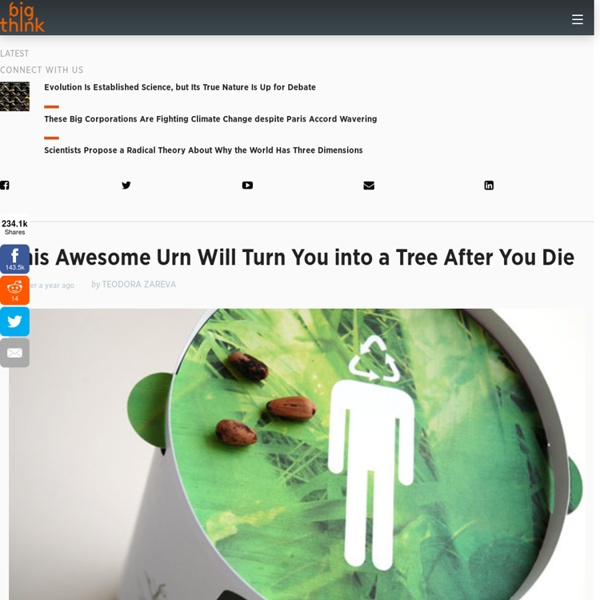This Awesome Urn Will Turn You into a Tree After You Die

Analytical Puzzles and Problems
Lateral thinking puzzles that challenge your preconceptions. 1. You are driving down the road in your car on a wild, stormy night, when you pass by a bus stop and you see three people waiting for the bus: 1. An old lady who looks as if she is about to die. 2. An old friend who once saved your life. 3. Knowing that there can only be one passenger in your car, whom would you choose? Hint: You can make everyone happy. Solution: The old lady of course! 2. Hint: The police only know two things, that the criminal's name is John and that he is in a particular house. Solution: The fireman is the only man in the room. 3. Hint: He is very proud, so refuses to ever ask for help. Solution: The man is a dwarf. 4. Hint: It does not matter what the baby lands on, and it has nothing to do with luck. Solution: The baby fell out of a ground floor window. 5. Hint: His mother was an odd woman. Solution: When Bad Boy Bubby opened the cellar door he saw the living room and, through its windows, the garden. 6. 7.
In a Perfect World… | SadAndUseless.com
Created by Catrina Dulay (there are few more, so it’s worth to visit).
Alarm Clocks - Get Help Waking Up in the Morning at WomansDay.com
For most people, getting out of bed in the morning is a bit of a struggle. Luckily, the 10 clocks below are here to help. Some wake you up with an annoyingly loud noise, while others won't shut off until you complete a task--but they all promise to get even the sleepiest sleepyhead up and moving. Start Your Engines It’s full speed ahead as soon as this Genuine Hotrod Hardware drag-racing alarm clock goes off. Hide and Go Seek There's no excuse for waking up late with this alarm clock. Attention! Ever wonder what waking up in the army would be like? Duck for Cover This Sonic Grenade alarm clock is guaranteed to get your sleepy children out of bed. Blast Off The Rocket Launcher alarm clock will really "launch" you from your bed. Puzzled There's probably nothing more annoying than putting together a puzzle before you've even had a cup of coffee, but with the Puzzle Alarm Clock, you'll have to do just that. Get Up, Stand Up Don’t Drop the Bomb Cock-a-Doodle-Doo It Keeps Going and Going
Related:
Related:



